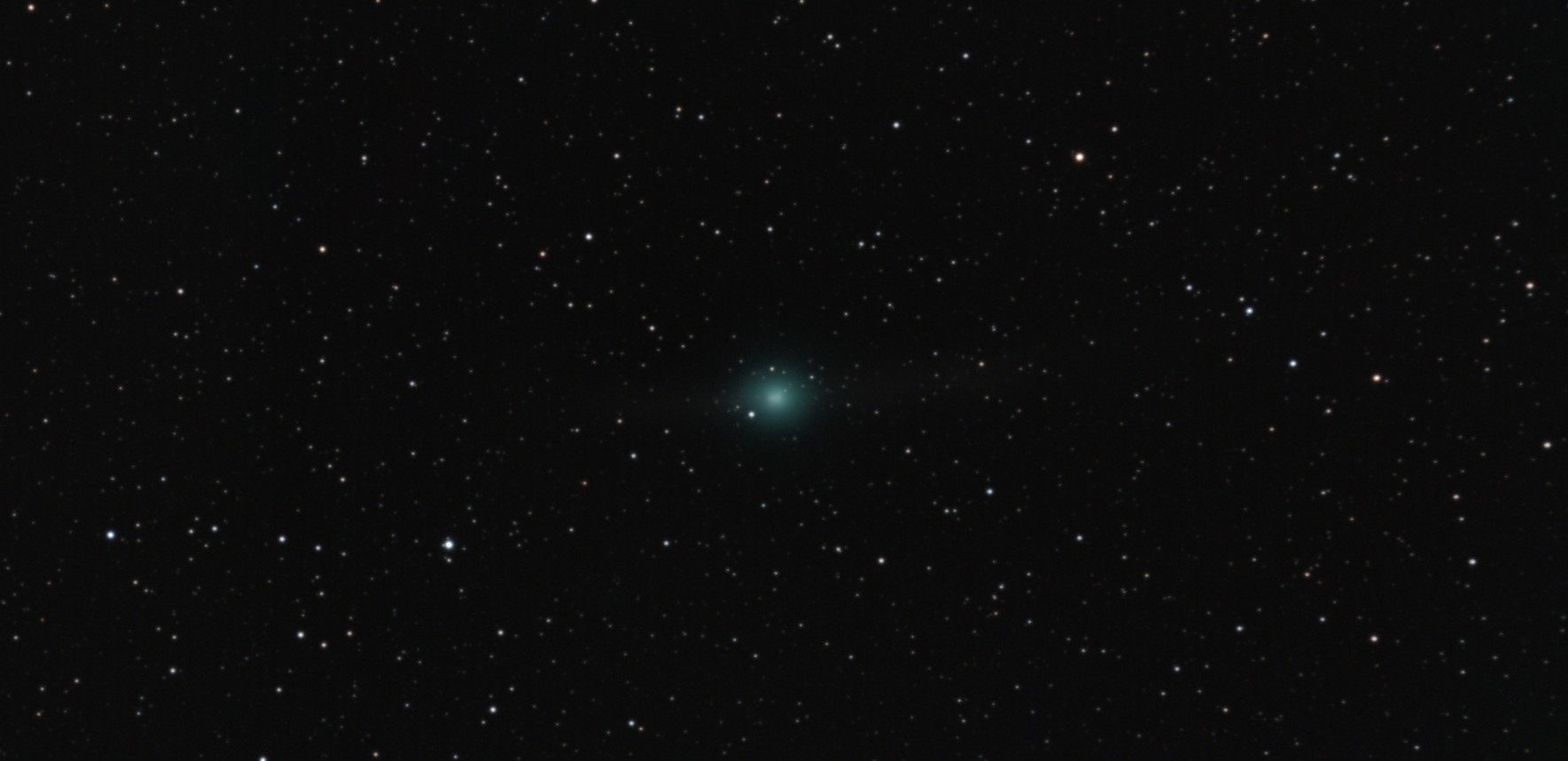
At the time this image was taken, this comet had just made its closest approach to the Sun only eight days earlier. The comet displayed a faint tail, and also had a rare anti-tail that was visible, because the comet lies in the same orbital plane as us. The comet was hidden in the solar glare during November and December, and in early January 2009 began to appear in the early morning sky just before dawn. Each day it climbed higher in the southeast before dawn. The comet is expected to get brighter over the next month even though it has passed perihelion, because its distance from earth will diminish until the comet makes its closest approach to earth on February 24, 2009, at a distance of 0.41 a.u. (61 million kilometers). The comet is traveling in a parabolic orbit almost exactly along the ecliptic, but is going backwards (i.e., it is orbiting in the opposite direction from the planets). Comet Lulin will not return again for more than a thousand years.
This comet was discovered by a 19 year-old student at Sun Yat-sen University in mainland China, on images taken by Chi Sheng Lin at the National Central University in Taiwan on the night of July 11, 2007. The year 2007 was a record year for comet discoveries, with a total of 223 comets being discovered during that year.
This image is a color composite RGB CCD image taken with an STL-11000M CCD using a Takahashi FCT-150 refractor telescope at f7. The image was taken from my backyard in Scottsdale, Arizona.
Constellation: Libra
RA: 15h 43m 57s Dec: -18d 54' 29" (J2000)
January 18, 2008 at 1310 UT
Image by Sid Leach
Scottsdale, Arizona
Recent Images.
Complete list of images.
Description of equipment used to acquire images.
Home
Feedback and comments should go to Sid